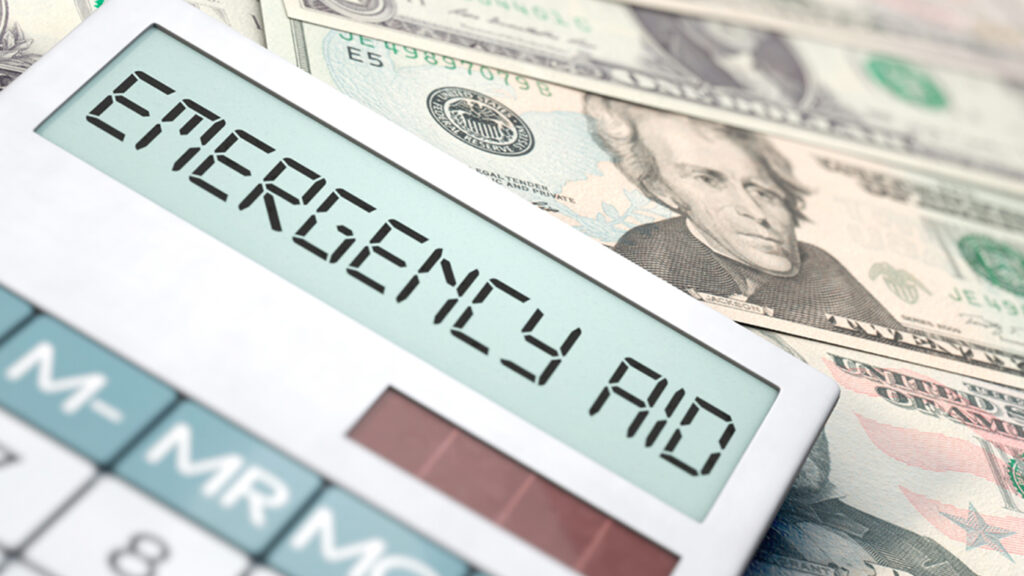Round one of the Paycheck Protection Program (PPP) — a $350 billion package aimed at helping small businesses with payroll expenses — exhausted its funding by approving more than 1.6 million loans within two weeks of its launch. Round two — a $320 billion infusion — kicked off on April 27th, 2020, and despite some technical glitches in getting loan applications uploaded by banks, more than 500,000 loans valued at more than $55 billion were approved by the following afternoon.
While these funds will provide a much-needed lifeline to millions of the estimated 30.2 million small businesses in the U.S., lawmakers elected to exclude a second tranche of $150 billion in aid earmarked for local and state governments. Even as congress debates the merits of providing additional funding and fiscal mismanagement at the state and local levels, many governments are now strapped for cash and are in dire need of assistance.
Over the last several years, soaring home prices allowed many local governments to line their coffers from rising property taxes. However, these surpluses have begun to run dry as city and state governments have been sideswiped by an array of unexpected expenses relating to COVID-19, ranging from a once unimaginable surge in unemployment benefit payouts to skyrocketing healthcare-related expenses.
As the nation has entered a potentially deep recession, how deep and how long is unknown, revenue from corporate and personal income taxes is down as are taxes levied on capital gains. Compounding the situation is the sudden collapse of retail sales, and the associated retail sales tax revenue. Total retail sales which include online and in-store purchases as well as restaurants and bar receipts, plunged 8.7% month over month in March, and April will undoubtedly be much worse. In addition, gasoline tax revenue is running on empty as personal travel is down 41% and long-haul trucking is down 9%, when comparing nationwide travel during a six-week period (March 1 – April 17, 2020), according to INRIX.
As a result, state and local governments across the country are facing a wave of pay cuts, layoffs, furloughs and program cuts. For example:
- Los Angeles is requiring city employees to take 26 days of unpaid leave
- Honolulu is proposing 20% pay cuts for public sector workers
- Detroit is looking to furlough thousands of employees
- Pennsylvania stopped paying nearly 10% of its workforce
While Congress did include $150 billion in aid as part of the $2 trillion relief package signed in March, the aid was only earmarked for large cities and counties. The U.S. Conference of Mayors as well as the National League of Cities recently solicited the White House for $250 billion in assistance for local governments, citing that 98% of mid-size cities are expecting a budget deficit and more than half of them indicated that first responders, such as police and fire departments, will be facing cuts.
Opinions are divided on either side of the House of Representatives on whether to support any additional stimulus packages without the money being earmarked for state and local governments.
With marked state by state variations in reopening guidelines and a pandemic that is still growing, there is a noticeable climate of uncertainty. As businesses begin to scale operations back up across the nation, communities will need the continued support of first responders, bus drivers, road crews, building inspectors and all the other employees who make a city run. The availability of funding is key. Just as small businesses are struggling, relief can’t come soon enough to local and state governments.
About the Author:
Steig Seaward is the national director of research for Colliers in the U.S. and oversees the national research team and provides strategic leadership to all local offices. Based in Denver, Colorado, Steig brings more than 25+ years of commercial real estate experience, with extensive expertise in research, training and product development.

 Steig Seaward
Steig Seaward

 Chris Zlocki
Chris Zlocki
 Adam Schindler
Adam Schindler